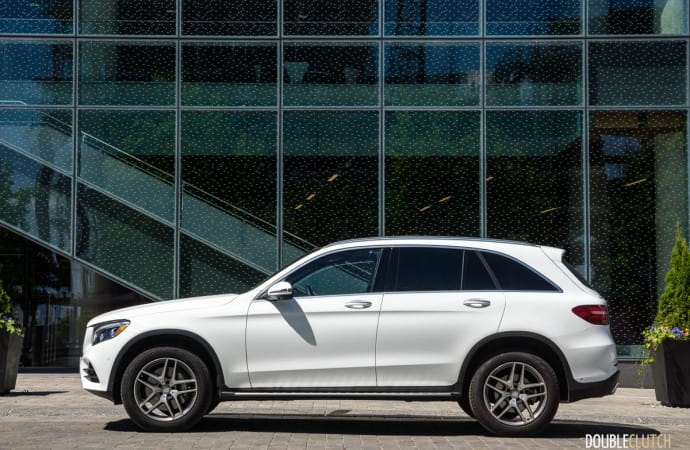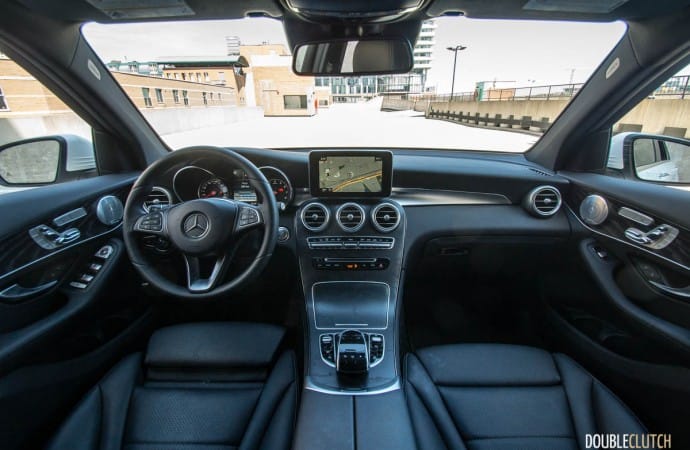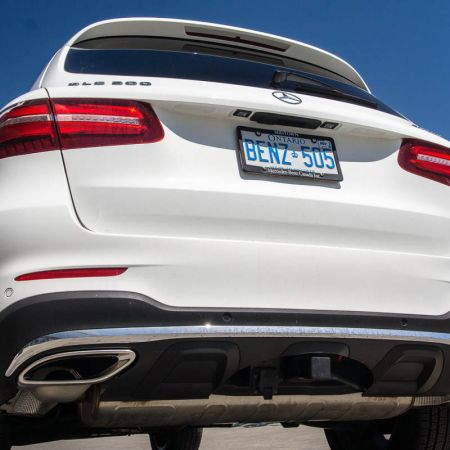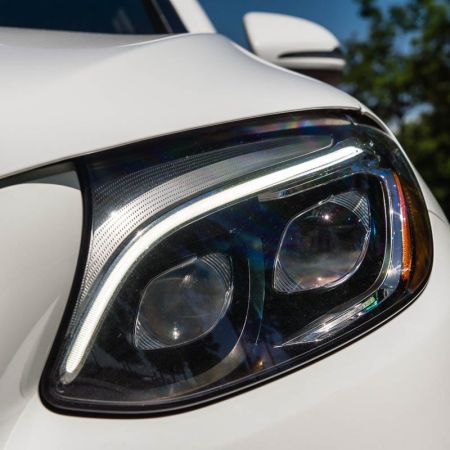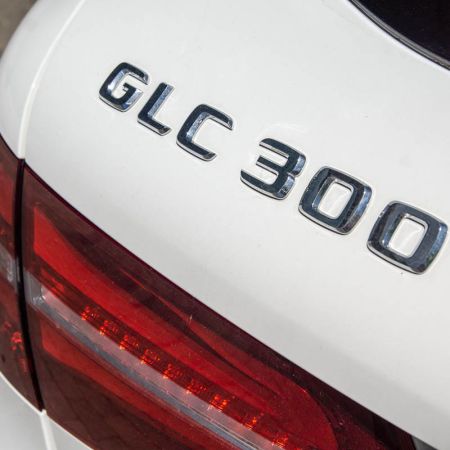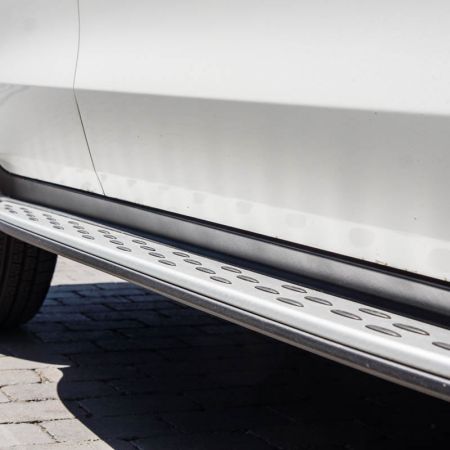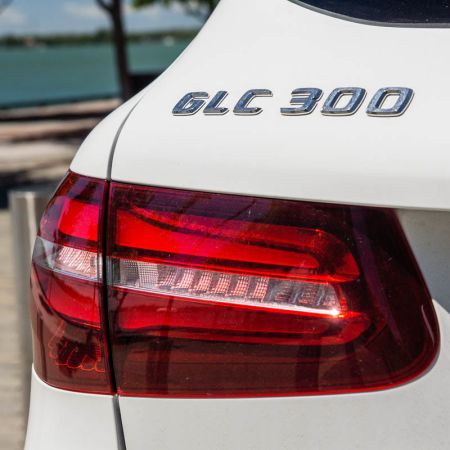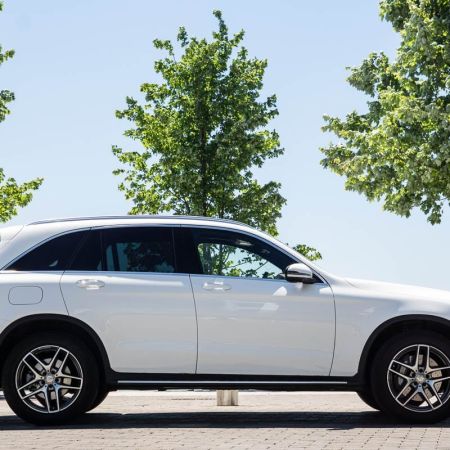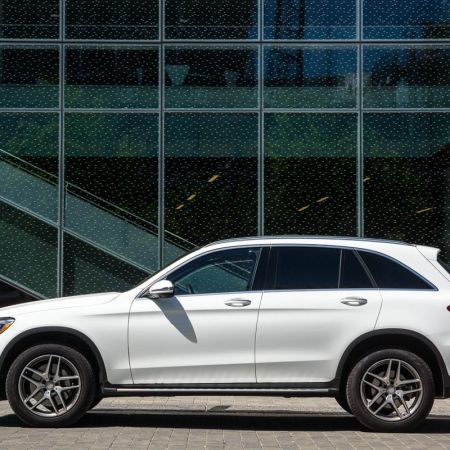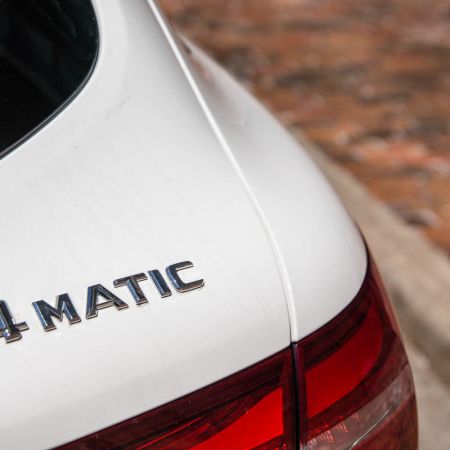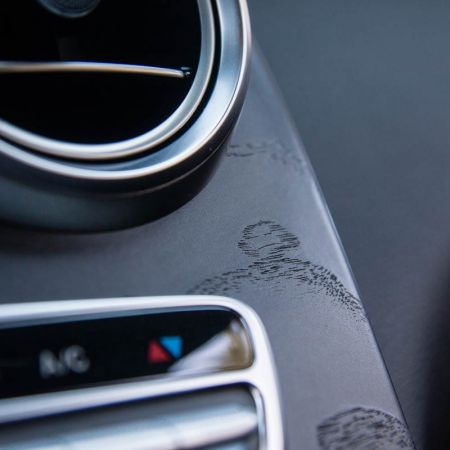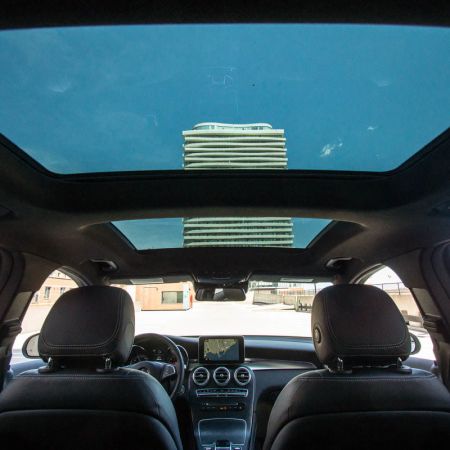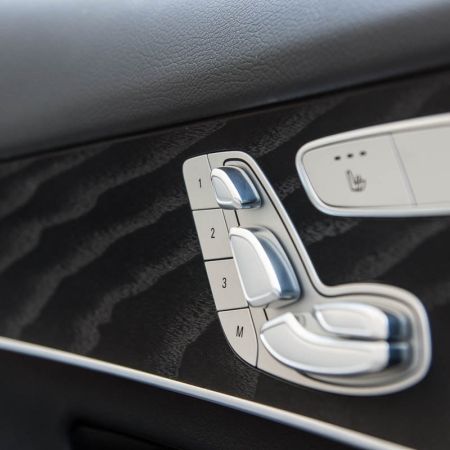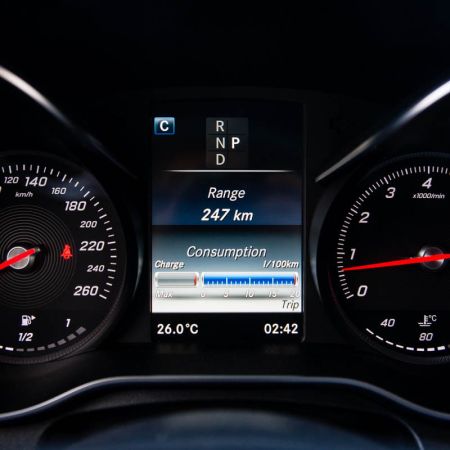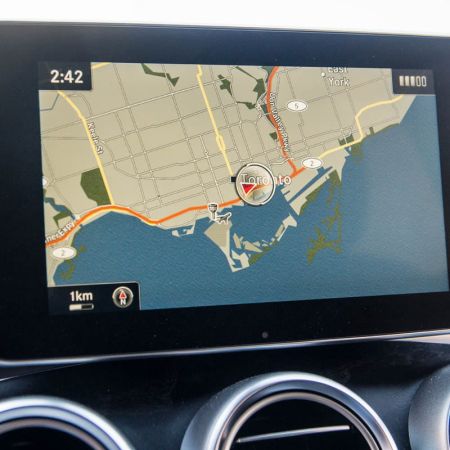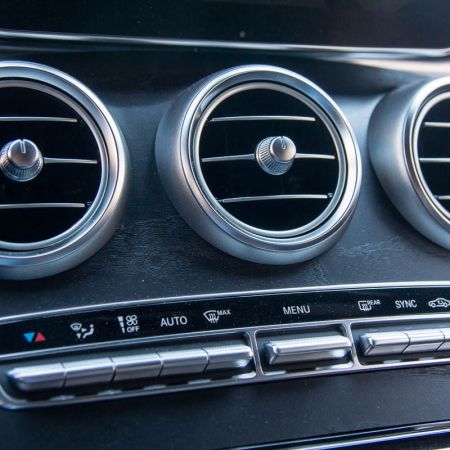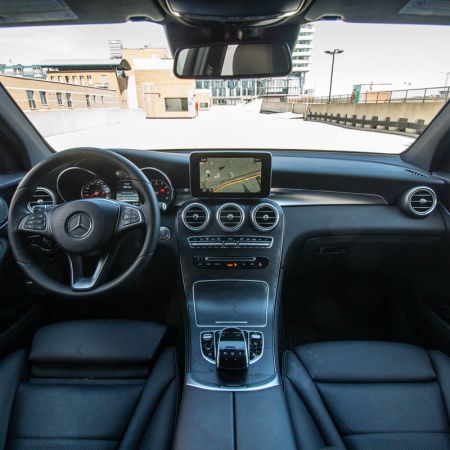Mercedes-Benz has been on a crusade to re-invent its branding, in attempt to keep the brand up-to-date in the most German of ways. A few brands elsewhere in the industry are undergoing the same attempt at transformation, but one of the common denominators at play is the drive to rename and reposition certain models in their respective lineups. Coinciding with the replacement of the popular (almost) midsize GLK-Class, Mercedes-Benz announced the GLC-Class, which would represent a fairly sizeable departure.
The method to Mercedes-Benz’ naming scheme is an understanding of how the existing model hierarchy worked. To quickly sum it up, the position of the letter in the alphabet roughly denoted where a model was in the lineup. The A-Class and B-Class serve as the entry-level, the C-Class (reviewed here) and E-Class represent the medium-sized choices, and the S-Class is the long-time flagship. Their crossover utility vehicles have been somewhat scattered, with nameplates such as GLK, ML, and GL, in order from smallest to largest. The great re-naming sees the “GL” prefix attached to the respective letter in their lineup: GLA, GLC, GLE (reviewed here), and GLS, just like their sedans.
The old GLK was attractive to many because of its boxy shape and chiseled lines. It almost served as a decent tribute to the Mercedes-Benz’ old days of angular styling and hard lines in the 1990s. The mid-model refresh of the GLK saw the front-end get a softer look, which would be an indicator of what was to come, in terms of where Mercedes-Benz was heading, styling-wise. The new GLC-Class was unveiled last year, as a 2016 model. Coinciding with the success of the C-Class, the GLC-Class takes on a lot of the styling cues of its sedan sibling – which is a good thing.
The front of the GLC-Class, ahead of the fenders basically looks like a jacked-up C-Class, complete with its optional LED headlight system. The side profile is a departure from the blocky GLK, and almost mimics the Audi Q5 in a few ways, namely the shape of the side window area and greenhouse. The rear-end of the GLC-Class doesn’t quite look like the C-Class, with rectangular LED taillights over top of stylized chrome exhaust finishers.
It is a handsome, yet conservative take on the mid-size two-row luxury crossover segment. It’s a look that should age well into the future, but the GLC-Class doesn’t take any risks in terms of its design. Finished in Polar White, our GLC 300 tester provides lots of contrast with the optional AMG Sport Package, which consists of 19-inch ten-spoke wheels and a more aggressive front fascia. The understated looks will do well to blend in to the sea of medium-sized luxury crossovers that make up the suburban identity.
Inside, the GLC-Class exhibits a much more progressive eye to design, with my tester coming loaded with lots of Dark Ash open-pore wood covering the majority of the centre console. It’s a typical German interior with many different shades of black, but the contrast provided by the touches of aluminum here and there, as well as the laser-cut grilles of the excellent Burmeister stereo brighten things up – the aluminum HVAC vents are especially premium-feeling. The interior features the now-popular floating LCD display that manages the infotainment and climate control systems. Fixed to the top of the centre stack and measuring 7-inches in size, this screen can be interacted with via the rotary knob, or the touchpad sitting directly on top of it. The choice to use either is handy, but I personally preferred using the knurled rotary knob – the touch interface doesn’t quite respond as instantly as I would have liked.
The centre stack is especially clean, mostly because of the lack of a gear selector, which instead lives on the steering column, where most other cars would have their windshield wiper controls. All this space freed up is handy for showing off all that real wood trim, but the stalk used to select gears isn’t terribly substantial. There also isn’t a secondary way to control the transmission – BMW and Audi both allow you to manually select gears using the console mounted shifter. The large cupholder door is worth noting, because it is just that – really big. Other than the storage in the centre armrest, there isn’t much in the way of space to put your gadgets.
Overall, the interior of the GLC-Class is a nice place to be. I like the focus on the design, and the new hotness that is open-pore wood really does dress up the interior. Those accustomed to the new C-Class interior, will be at home in the GLC-Class (read: it’s pretty much the same). For those who value the style and design, it’s a pretty significant step ahead of the staid interior BMW offers, and it’s definitely more modern than the interior seen in the current Audi Q5.
Being a 300-Series model from Mercedes-Benz, the GLC 300 does not, by popular belief, contain a 3.0L engine under the hood. Those days are long gone, though most of the German choices available today follow the same philosophy. In keeping up with today’s standards for power, efficiency, and emissions, a 2.0L four-cylinder gasoline engine is what powers the GLC 300. Featuring twin-scroll turbocharging and direct-injection, this modern little engine puts out 241 horsepower @ 5500rpm and 273 lb-ft of torque from a low 1300rpm to a useful 4000rpm. It is paired up to Mercedes-Benz’s latest iteration of their 9G-TRONIC automatic transmission, featuring (you guessed it) 9-speeds, as well as 4MATIC all-wheel drive.
All nine of those ratios do a good job keeping the turbo-four in the heart of its powerband, and while there are many gear changes as you get up to cruising speed, the transmission never feels confused or unsure of what it needs to do. Shifts are appropriately crisp, depending on the drive mode you’ve selected (via the rocker dial nestled next to the infotainment knob). The rich torque curve delivers strong everyday acceleration that should satisfy the usual target demographic of luxury cute-utes like the GLC300.
One thing I wasn’t a big fan of: in the default Comfort mode, the transmission launches the car in second gear. This does make for smoother (read: less jerky) launches, but I like using the short first gear for the best possible acceleration. Selecting the Sport driving mode helps, but it tends to hold onto gears a little longer than I’d like before upshifting. Doing things yourself with the Manual drive mode helps, but that may be more work than most would be willing to put up with.
Thanks to the trim size (the GLC happens to be slightly lighter than the GLK it replaces), fuel efficiency is improved. Technologies like idle start-stop and the multi-speed transmission also help contribute towards a city efficiency rating of 11.1L/100km, and a highway rating of 8.5L/100km. During my week of mixed driving with the GLC 300, I ended up with an indicated average of 10.7L/100km. As mentioned earlier, this involved quite a bit of time spent in the Sport driving mode. The fuel tank will accept 66L of 91-octane fuel.
The Mercedes-Benz GLC 300 plays in a very thick field of competitors, all with their own unique quirks and brand identities. Its price starts at $44,950 for the base model, and can go up quickly depending on how eager you are with those option checkmark boxes. My tester was particularly well equipped: Dark Ash open-pore wood trim ($250), Intelligent Drive Package (active blind spot and lane keeping assist, as well as Distronic Plus adaptive cruise control, $2,700), LED lighting system (LED headlights with adaptive highbeam assist, $1,700), Premium Package (power tailgate, satellite navigation, reverse camera, panoramic sunroof, $4,900), Premium Plus Package (power seat memory, power steering column, heated rear seats, parking assist, keyless entry, $2,900), and the Sport Package (AMG exterior package with wheels, $1,500). This brings the as-tested price of an almost fully-loaded GLC 300 to $62,640.
The Audi Q5 is one of the more obvious competitors: you can get one with a forced-induction V6 and most of the essential gadgets, but it is let down a little bit by its dated interior and exterior design. The BMW X3 is very similar in both regards, as well. Lexus’ new NX200t (reviewed here) is a bolder, more interesting entry, but is a little smaller inside and out. If the styling works for you, it’s definitely worth looking at for its overall competence. Acura’s RDX has been thoughtfully updated recently, and it fights with a strong value proposition and muscular V6 as standard equipment. Lincoln’s MKC (reviewed here) also delivers a very strong bang-for-the-buck factor, and its up-level 2.3L EcoBoost turbo-four is especially potent.
The Mercedes-Benz GLC 300 does a good job of playing things safe, and checking off a lot of points that the competition currently offers. It essentially is a product of a cookie-cutter mold, with Mercedes-Benz’ own subtle flavourings added. If you’re a prospective customer in this segment, the sheer amount of choice you have available can be overwhelming. The GLC 300 does everything pretty well, and if you’re looking for a progressive, yet useful interior design, combined with the handsome and low-key exterior, then consider adding it to your shopping list. There’s one last thing that I think would make the Mercedes-Benz GLC more interesting: the AMG GLC 43 exists elsewhere in the world – dropping that turbocharged V6 under the hood should liven things up quite a bit.

